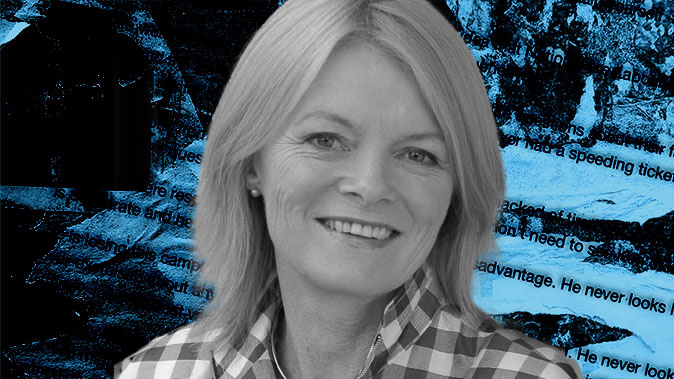
A Court of Appeal decision was released last week that will have a profound influence on the future of New Zealand. Poor drafting and a radical application of ‘tikanga’ by the judiciary has delivered the exact opposite outcome from what the public was promised.
The law in question is the Marine and Coastal Area Act (MACA). It was introduced by John Key’s National Government back in 2011 as part of their coalition agreement with the Māori Party. The new law repealed Crown ownership of the foreshore and seabed and opened up the coast for tribal claims.
At the time, the public was assured by the architect of the law change, the Attorney-General Chris Finlayson, that no more than 10 percent of New Zealand’s 20,000 km coastline would end up being controlled by Māori. Those promises have now been proven false.
The Court of Appeal decision could result in virtually the entire New Zealand coastline and Territorial Sea passing into Māori control.
This debacle began in 2003, when a dispute between iwi and a council over a marine farming application escalated to the Court of Appeal. Taking the law into their own hands, the Court’s Ngati Apa decision over-ruled Crown ownership of the foreshore and seabed by finding that pockets of customary interest might still exist.
A resulting flood of claims for the coast, forced Helen Clark’s Labour Government to legislate to restore Crown ownership through the 2004 Foreshore and Seabed Act.
While the new law provided for tribal groups to prove their customary interest in the High Court, there were on-going complaints that the bar was set too high for claims to succeed.
The Māori Party campaigned for a law change, and once in coalition with National, MACA repealed Crown ownership and opened up the coast for tribal claims - either through hearings in the High Court or direct negotiation with the Crown.
The prize was huge: 10 million hectares of the richest natural resources in the country covering the distance between the average spring high tide waterline and the 12 nautical mile Territorial Sea limit, along with the airspace above, the water space, and the subsoil, bedrock and mineral wealth below.
At the time, the Māori Party informed their supporters that the new threshold tests for customary title would work in their favour: “Tests incorporate tikanga allowing for variations among iwi, transfers of rights between hapu, and for tikanga to evolve. Test do NOT require claimants to hold adjoining land (so raupatu iwi can claim customary title). Allowing others to fish, and overlapping rights of neighbouring hapu, do not disqualify claims…”
In other words, the Māori Party was confident that tikanga would be a central consideration in the new law, and as a result, neither historic land confiscations, nor overlapping claims would disqualify claimants.
This was at odds with assurances being made to the public.
We were told the tests to gain a Customary Marine Title (CMT) were high. In section 58(1)(a) of MACA, claimants had to firstly, “hold the specified area in accordance with tikanga”. And secondly, under 58(1)(b), they had to have “exclusively used and occupied the area without substantial interruption from 1840 to the present day.”
Overlapping claims, which were obviously inconsistent with the concept of ‘exclusive’ use, were expected to be ruled out, as were claims for areas of the coast where adjoining land had been confiscated, or where third-party use resulted in substantial interruptions.
Claimants gaining CMTs would receive an invaluable property right akin to ownership. This includes a right of veto over all resource consents and conservation activities; involvement in coastal planning and policy development; the ability to charge commercial operators, impose rahui, and restrict public access through wahi tapu; and ownership rights to all non-nationalised minerals – including royalties from existing mining operations, back-dated to when applications were first submitted.
While the law protects commercial fishing, navigation, and public access, as well as existing marine reserves, aquaculture activities, and essential infrastructure operated by the Crown, port companies, and councils, it does not prevent CMT holders from regulating consent applications for expansion plans and other variations.
On the eve of the six-year deadline for MACA claims in April 2017, almost 600 overlapping applications for the entire New Zealand coastline and Territorial Sea flooded in – some 200 for the High Court and the balance for Crown Engagement.
While Māori claimants were offered up to $458,000 to fund their High Court cases, there was no financial assistance available for those wanting to oppose the claims. As a result, despite widespread public concern, opposition to the claims was limited.
That’s when the NZCPR stepped in to raise funds to enable a voluntary community group to oppose the first “Edwards” claim in the public interest.
Our understanding was that none of the multiple applicants for a 44 km stretch of the Bay of Plenty coastline around Opotiki would meet the high MACA threshold for a CMT, and our hope was that ensuring a sensible outcome for the Edwards case would have a precedent effect on all other claims.
However, the High Court ended up awarding three CMT orders – one of them shared between six applicants, and another shared between seven – as well as six orders for the lesser Protected Customary Right for activities such as gathering shells and driftwood.
In his controversial decision, Justice Churchman ruled that ‘tikanga’ outweighed any property-right requirements: “The task for the Court in considering whether the requirements of s 58(1)(a) of the Act have been met is therefore not to attempt to measure the factual situation against western property concepts… The critical focus must be on the question of whether or not the specified area was held in accordance with the tikanga that has been established.”
The Churchman judgment elevated tikanga - which had been determined by Pukenga (cultural advisors engaged by the Court) rather than the Judge himself - above any need to consider the property-rights s 58(1)(b) test. And with ‘tikanga’ defined to include ‘sharing’, any consideration of “exclusive” use of the area was dismissed as irrelevant.
As a result, instead of being ruled out, overlapping claims were accommodated through a new tikanga-based concept of “shared exclusivity”. And “substantial interruptions” were interpreted to mean that small parts of a claimed area might need to be excluded, rather than the claim itself.
Since the High Court ruling delivered the exact opposite of what we expected from the National Party’s assurances about their law change, we appealed the case to the Court of Appeal. It was their decision that has just been released.
The three Court of Appeal Judges delivered a split decision - while they all agreed on the remedies, their reasoning varied.
Our argument was that the Edwards case needed to be sent back to the High Court so the s 58(1)(b) property-rights test of whether claimed areas had been used and occupied exclusively and continuously since 1840 could be properly determined by fact and proof.
While the Court agreed with us that two of the three CMT orders should be sent back to the High Court to be re-assessed, it was a hollow victory.
The Court of Appeal decision affirms tikanga as the dominant consideration when assessing CMT applications. As a consequence, the hurdles to gaining title are now so low and self-serving that virtually all of the claims are likely to succeed.
As a result, the entire marine and coastal area of New Zealand will end up under the control of competing Māori tribal groups, which is the exact opposite of what National promised when they introduced the new law in 2011.
What the judgement has highlighted is the danger of including ‘tikanga’ in the law, since it can be interpreted to mean virtually anything at all.
But what is particularly concerning about this case, is that while the Court of Appeal understood our argument that the law should deliver what Parliament intended, they did not agree:
“We have found it exceptionally difficult to reconcile the text of s 58(1)(b) with the purpose of MACA. On a literal reading of s 58(1)(b), and its requirement that the group must have exclusively used and occupied the area from 1840 to the present day, it seems likely there would be few areas of the foreshore or seabed where CMT could be made out. In some areas where the common law would recognise that a group had customary title, incursions into that area over the last 180 years by third parties would deprive the group of CMT… Far from recognising and promoting customary interests, MACA would in many cases extinguish those interests.”
In other words, since the Judges reasoned that doing what Parliament intended would be perceived as unjust and contrary to MACA’s purpose, they interpreted the law in a way that will ensure virtually all of the tribal claims succeed.
As a result, there is now no doubt at all that the Courts will apply the law to the bulk of claims yet to be considered – some 200 in the High Court and 385 awaiting Crown Engagement – in such a way that title to New Zealand’s coastal marine area will pass to Māori.
What is also clear is that they will not be managing their area in the public good but will prioritise controlling the resource for their own financial advantage.
Furthermore, the Court of Appeal has even gone so far as to offer guidance on managing competing applications. While Justice Miller held that the claimant groups would have to apply jointly for a CMT, or at least not openly disagree as to what the relevant tikanga was, President Cooper and Justice Goddard established a new role for the Court - to appoint a trustee to formally hold CMT rights until the groups could work it out ‘in accordance with tikanga’.
In other words, the various claimants to a particular area will in effect have a holding trust through which the area will be managed, with income from CMT rights received and distributed according to an agreed formula.
Since multiple groups expressing an interest in an area will undoubtedly want to exercise their rights to be consulted as affected parties to resource consent applications, the end result, where literally hundreds of tribal groups will all want to be involved so they can clip the ticket, will make managing New Zealand’s coastline virtually impossible.
The bottom line is that since we now know that National’s law change will deliver a disastrous outcome that is the exact opposite of what they promised to the New Zealand public, we believe the new National Government has no option but to put it right by changing the law.
I will leave the last word to the former Judge and law lecturer Anthony Willy, who has examined the Court of Appeal finding and agrees that repealing MACA and restoring Crown ownership of the foreshore and seabed is the only way forward: “This case has a way to travel through the Courts… The costs of this litigation are and will be enormous… Given the uncertainty surrounding the judgments and their effect on society the only course is to return the foreshore and seabed to Crown ownership where it has resided since 1840.”
Dr Muriel Newman, a former Member of Parliament, runs the New Zealand Centre for Political Research public policy think tank at www.nzcpr.com.
Take your Radio, Podcasts and Music with you









